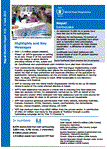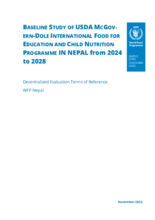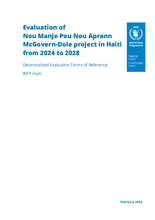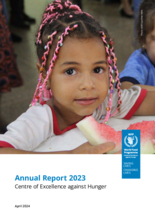
Highlights
- With 1.9 million people assisted, Phase I of WFP’s operation is coming to an end. Phase II of the operation has now begun in some districts providing rations of rice, pulses and oil. Conditional and unconditional cash transfers have also been introduced.
- Four weeks into its emergency operation, WFP has begun implementing a cash transfer programme. Providing cash allows the earthquake-affected people to select the food of their preference and improves efficiency of the operation by significantly reducing dependency on the extremely difficult logistics of moving food. To begin, WFP is striving to reach 3500 households in two districts— Makwanpur and Sindhuli.
- WFP is working with the World Health Organisation (WHO) to set up 50 mobile clinics in some of the worst affected districts in Nepal.
- WFP’s food assistance has played a critical role in ensuring that food insecurity does not escalate further. An assessment carried out by WFP on behalf of the food security cluster (FSC) indicated that food assistance was the main source for cereals and pulses for close to 40 percent of the surveyed households.
- WFP has received generous contributions from many donors, including Australia, Canada, Denmark, ECHO, Germany, Japan, Liechtenstein, the Netherlands, Norway, United Kingdom, United States, UN CERF.
- WFP has received more than US$5 million from the private sector. A contribution of US$1.64 million was made by the people of Thailand through a public fundraising campaign led by Thai TV Channel 3.
| Document | File |
|---|---|
| WFP Nepal Earthquake Situation Report #10, 01 June 2015 |
PDF | 2.26 MB
Download
|



